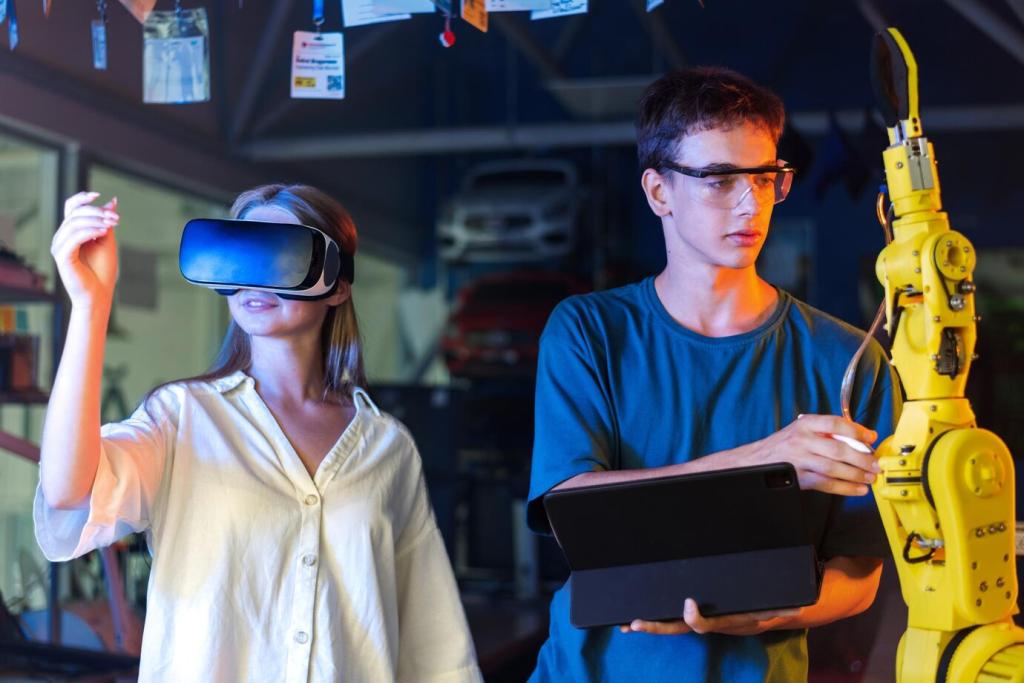
AI Applications in Special Education Tools
Artificial intelligence is transforming the way educators, therapists, and parents support learners with special needs. By merging advanced algorithms with personalized educational strategies, AI-powered tools provide unique opportunities for students who require specialized attention. These technological innovations are bridging gaps, breaking down barriers, and delivering tailored learning experiences that adapt to each individual’s requirements, paving the way for a more inclusive and equitable educational landscape.
Personalized Learning Experiences
Dynamic Curriculum Adaptation
Dynamic curriculum adaptation leverages AI’s capacity to analyze student performance data continuously, enabling real-time modifications to lesson difficulty, content type, or pace. For learners who struggle with traditional instruction, this ensures they are neither overwhelmed nor bored, maintaining engagement and promoting retention. The AI observes how the student interacts with the material and adjusts the sequence, introduces alternative explanations, or incorporates different modalities, such as visual or auditory cues, to accommodate unique learning processes. This fluid customization fosters a deeper understanding and prevents the common pitfalls of one-size-fits-all curricula in special education.
Real-Time Progress Monitoring
AI-driven tools can perform ongoing assessments without interrupting the learning process, gathering data on a student’s strengths, challenges, and overall engagement. By evaluating these metrics in real time, educators receive immediate feedback about which strategies are effective and where adjustments are needed. This empowers teachers to intervene early, celebrate small victories, and provide targeted support for skill development, ensuring that each learner gets the assistance required for steady progress. The result is a classroom ecosystem where diverse learners’ needs are continuously met with timely and personalized interventions.
Emotion-Aware Learning Environments
Modern AI models can interpret learners’ facial expressions, voice tones, and other cues to detect emotional states such as frustration, confusion, or enthusiasm. In a special education context, this capability is invaluable for adapting the learning atmosphere instantly to support emotional well-being. When a student exhibits signs of stress or disengagement, the system can alter activities, introduce breaks, or offer encouraging feedback. By addressing emotional as well as academic needs, AI-powered environments create a more holistic and comfortable learning experience for students with disabilities or emotional challenges.

Intelligent speech generating devices use AI algorithms to convert text, symbols, or even eye movements into clear, natural-sounding speech. For students who are nonverbal or face significant speech difficulties, these devices empower them to express needs, ask questions, and fully participate in educational activities. The technology learns individual speech patterns, accents, and preferred vocabulary, making communication more intuitive and authentic. Ultimately, this allows students to build confidence and develop critical social skills in both classroom and life settings.

Enhanced Accessibility Solutions
Adaptive Reading and Writing Aids
Students with dyslexia, vision impairments, or motor difficulties benefit tremendously from AI-enhanced reading and writing tools. These tools can read text aloud, highlight passages for better tracking, or generate alternative descriptions for images. For writing, AI systems can suggest words, correct grammar, and even adjust sentence complexity based on the student’s level. These intelligent supports remove obstacles to literacy, boosting confidence and participation in classroom activities without drawing attention to the student’s challenges.
Mobility and Navigation Assistance
AI solutions extend beyond the screen, offering hands-on mobility guidance for students who are blind, visually impaired, or have mobility restrictions. Smart canes, AI-powered wheelchairs, and indoor navigation applications use real-time data and environmental awareness to help learners move independently through school settings. These technologies promote safety, autonomy, and inclusivity, enabling students to take full advantage of educational resources, extracurricular activities, and social opportunities.
Intelligent Sensory Modulation
Classrooms can be overwhelming for students with sensory processing disorders. AI applications now monitor environmental factors such as lighting, sound, and visual stimuli, automatically adjusting conditions to minimize discomfort. These intelligent systems alert teachers to rising noise levels, trigger calming music, or suggest environmental changes to ensure learners remain focused and comfortable. By proactively managing sensory inputs, AI helps create classrooms where students with diverse needs can flourish.
